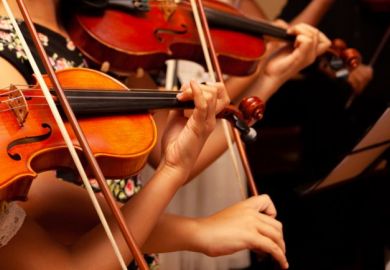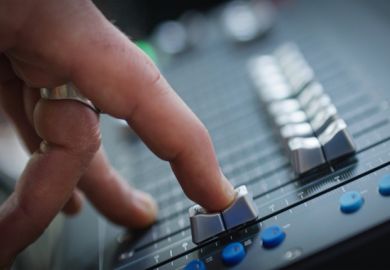Messiaen's reputation has managed both to cross the channel and to survive his death (in 1992), and a solid core of Messiaen works is regularly and popularly performed in this country: the huge Turangalla-symphonie has virtually acquired the status of a Proms favourite; a chamber-music recital may comfortably include the Quatuor pour la fin du temps; and even the ultimate challenge in concentration for both pianist and audience represented by the Vingt regards sur L'Enfant-Jesus finds willing performers and listeners at provincial festivals. Even more apparently inaccessible writing, such as his single three-act, five-hour opera, Saint Francois d'Assise, or the posthumous Eclairs sur l'au-dela. . . , in which his musical language is as monolithic and uncompromising as anywhere in the corpus, attracted capacity audiences at their London premieres. Perhaps only the organ music is underappreciated in live performance here, no doubt in part as a result of the tonal dissimilarity between the English cathedral organ and the great French Cavaille-Coll instruments, the sound of whose unique reed stops, grating away at the back of the church, enhances Messiaen's audacious registration to maximally disconcerting effect.
And yet there is much that would superficially militate against Messiaen's accessibility both in France and beyond. He is a composer whose ardent and naively optimistic Catholicism chimes awkwardly not just with an ethos of credal plurality but with a confused and questioning Church. His lifelong preoccupation with birdsong, first of all suggested impressionistically, but increasingly scientifically recorded and transposed according to an ingenious method whereby the extremes of pitch and microtonal utterance are adapted to (more or less) conventional notation, culminates in the immense landscapes of the Catalogue d'oiseaux. More eccentric again is his conviction in colour-hearing synaesthesia, not just as a personal response, but with a genuine belief in its objectivity; an aspect of his aesthetic that for the uninitiated (or just deprived) sits uneasily between the visionary and the cranky. And, above all, his refusal to compromise in terms of time and resources: the second act alone of his opera is of nearly two hours' duration; and, in his very last work, a phalanx of ten double-basses remains silent until the eighth of 11 movements.
Furthermore, it is not possible fully to dissociate the writing from the semantic dimension without some loss, even when there is no explicit verbal component: certain of Messiaen's compositions seek to incorporate a "communicable language", whereby specific letters of the alphabet are accorded notes of particular pitch and duration, and the frequent use of motivic interplay necessitates some attention to the extra-musical significance of the individual components.
What to some extent replies to these difficulties (and emerges strongly from this volume) is the degree to which Messiaen achieves a synthesis between Christianity and pantheism, between western and oriental, ancient and modern musical languages, between pure musical ideas and extra-musical programmes and above all, and perhaps most centrally, between difficulty and simplicity. "Music and faith", as Wilfrid Mellers comments, "are complementary aspects of transcendence".
The Messiaen Companion is an indispensable guide both for the committed enthusiast and for the musically literate enquirer. It is divided into four sequences of chapters, consisting broadly of two major blocks devoted to a full and often technical analysis of the earlier and later music for piano, organ and orchestra in turn; in between these there is an "Interlude", in which penetrating treatments of theological, aesthetic and ornithological concerns are juxtaposed with biographical reminiscences of Messiaen as teacher and with an interview with his second wife, inspiration and chief pianistic interpreter, Yvonne Loriod; and finally four autonomous and technically somewhat less demanding chapters are devoted to the four last works, each of which could in some respects be read as a "grand summation" of his creative life.
A strong sense of both evolution and continuity is thus achieved, as of the discipline of Messiaen's writing, generously illustrated by a wealth of musical extracts, each as daunting as the next in showing the transmission of spontaneity through formal means, "apparent randomness achieved by extreme rigour".
The relationship with other composers (Debussy, Stravinsky, Boulez) as with other musical traditions (serialism, musique concr te) is fully explored, and goes a long way towards correcting the view of Messiaen as an isolated individualist. Detailed attention is given to the critically important features of his musical language: polymodality, extremes of pitch, dynamic and tempo (uniquely available on the Romantic organ), plainsong, birdsong, timbral colouring, palindromic construc- tions, interversions, as well as his deployment of electronic instruments such as the (otherwise ill-fated) ondes martenot, or the banks of pitched and unpitched percussion of his later writing. Several of the contributors (Peter Hill, Robert Sherlaw Johnson, Jane Manning, Malcolm Troup, Gillian Weir) are distinguished interpreters of Messiaen, and the (usually) well-judged interpolation of practical considerations of performance grounds the analysis in the living work of art, as well as underlining the impossibility of a "correct" reading even of this most meticulous of writers (only the chapter on vocal writing errs too far in the direction of a music lesson). Appropriate attention is given to Messiaen's own Technique de mon langage musical (1944), although it must be a matter for regret that we do not yet have the promised posthumous Traite de rythme, de couleur et d'ornithologie. It is also refreshing to discover all contributors examining with the maximum degree of objectivity the genuine difficulties of some of Messiaen's writing, such as the ambiguous status of certain mid-career piano works, poised between theoretical treaties and playable concert items; indeed, the tendency to resist uncritically encomiastic writing is one of the major strengths of this collection. Overall these essays are impeccably pitched: the reader is stretched, a realistic degree of technical expertise is taken for granted, but (s)he is also stimulated and reminded of or alerted to the sheer enjoyment of the music under discussion. Few readers, I suspect, will have progressed very far in their endeavour before the compact disc player is brought into action.
Richard Parish is a fellow and tutor in French, St Catherine's College, Oxford.
The Messiaen Companion
Editor - Peter Hill
ISBN - 0 571 16651 2 and 17033 1
Publisher - Faber and Faber
Price - £40.00 and £25.00
Pages - 581pp
Register to continue
Why register?
- Registration is free and only takes a moment
- Once registered, you can read 3 articles a month
- Sign up for our newsletter
Subscribe
Or subscribe for unlimited access to:
- Unlimited access to news, views, insights & reviews
- Digital editions
- Digital access to THE’s university and college rankings analysis
Already registered or a current subscriber?



